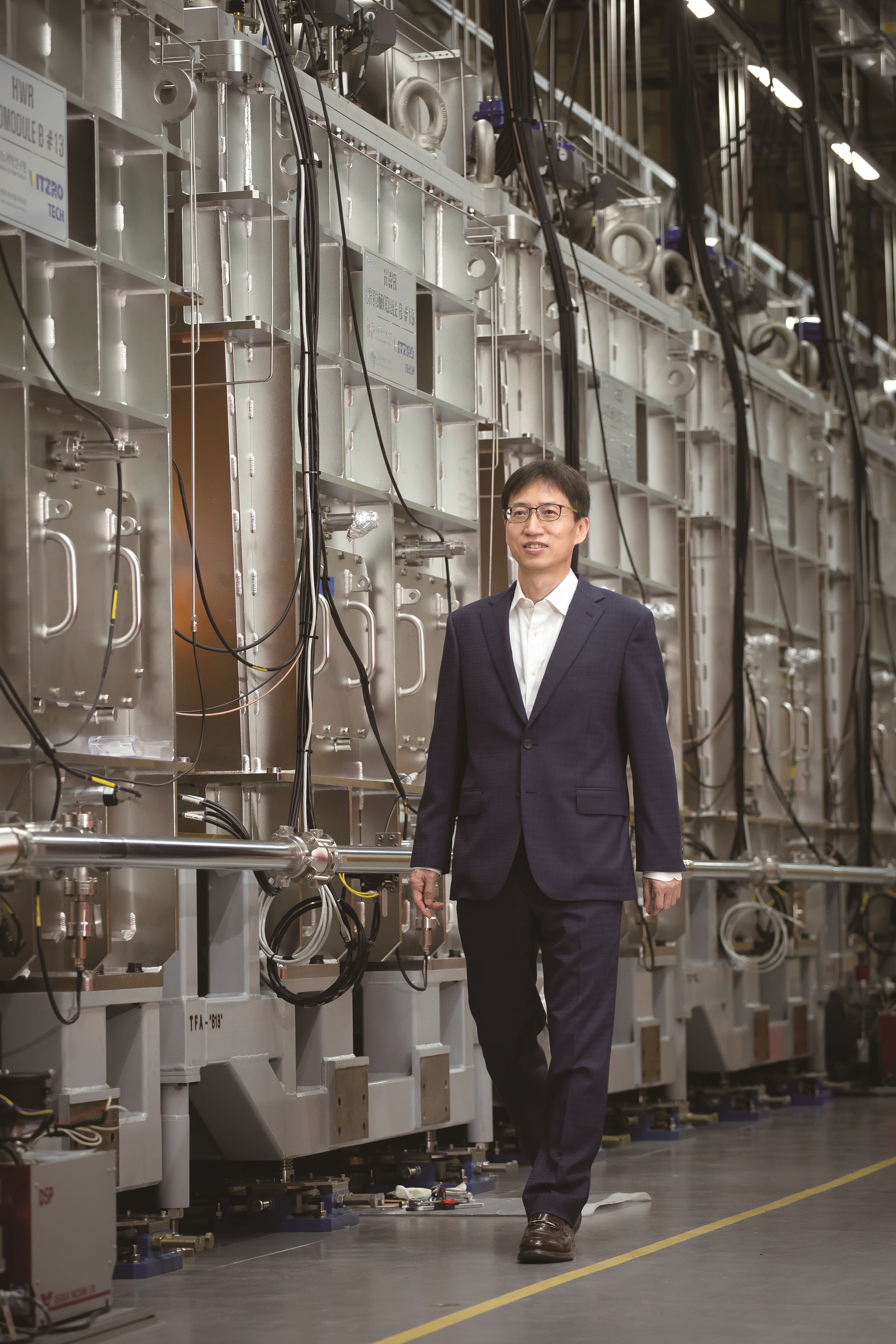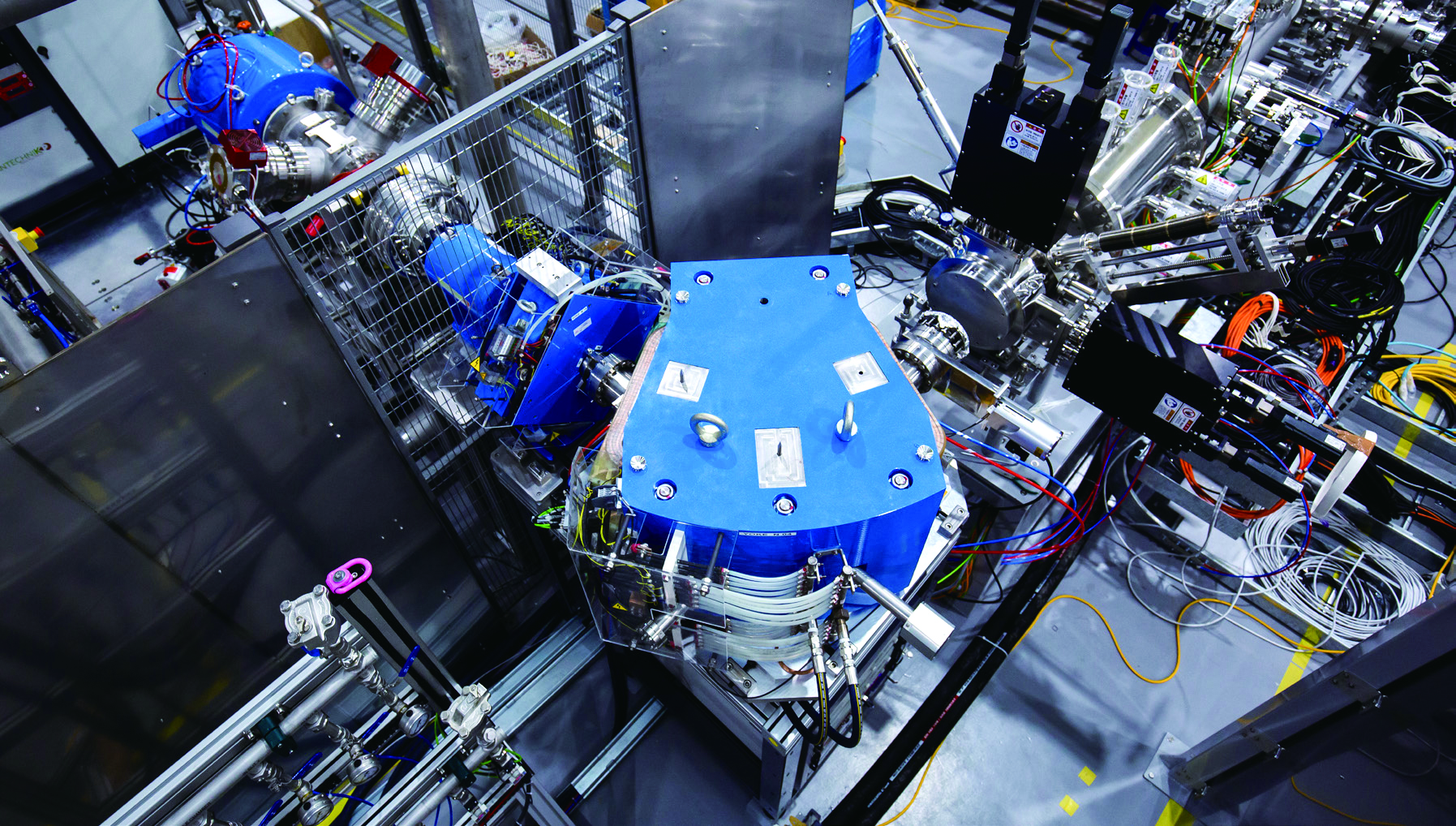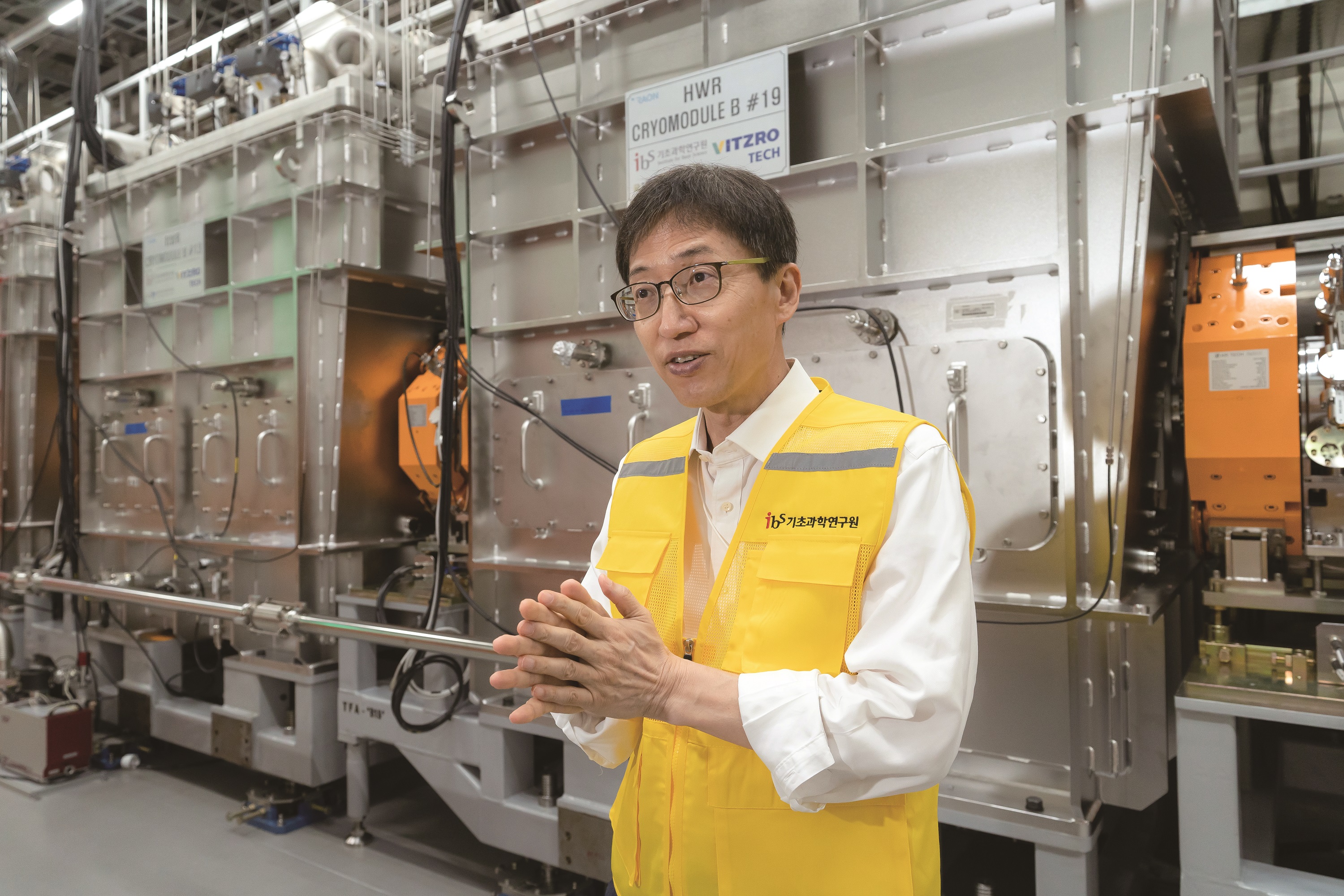주메뉴
- About IBS 연구원소개
-
Research Centers
연구단소개
- Research Outcomes
- Mathematics
- Physics
- Center for Theoretical Physics of the Universe(Particle Theory and Cosmology Group)
- Center for Theoretical Physics of the Universe(Cosmology, Gravity and Astroparticle Physics Group)
- Center for Exotic Nuclear Studies
- Center for Artificial Low Dimensional Electronic Systems
- Center for Underground Physics
- Center for Axion and Precision Physics Research
- Center for Theoretical Physics of Complex Systems
- Center for Quantum Nanoscience
- Center for Van der Waals Quantum Solids
- Chemistry
- Life Sciences
- Earth Science
- Interdisciplinary
- Institutes
- Korea Virus Research Institute
- News Center 뉴스 센터
- Career 인재초빙
- Living in Korea IBS School-UST
- IBS School 윤리경영


주메뉴
- About IBS
-
Research Centers
- Research Outcomes
- Mathematics
- Physics
- Center for Theoretical Physics of the Universe(Particle Theory and Cosmology Group)
- Center for Theoretical Physics of the Universe(Cosmology, Gravity and Astroparticle Physics Group)
- Center for Exotic Nuclear Studies
- Center for Artificial Low Dimensional Electronic Systems
- Center for Underground Physics
- Center for Axion and Precision Physics Research
- Center for Theoretical Physics of Complex Systems
- Center for Quantum Nanoscience
- Center for Van der Waals Quantum Solids
- Chemistry
- Life Sciences
- Earth Science
- Interdisciplinary
- Institutes
- Korea Virus Research Institute
- News Center
- Career
- Living in Korea
- IBS School
News Center
| Title | Scientists’ dream, aiming at the world | ||||
|---|---|---|---|---|---|
| Name | 전체관리자 | Registration Date | 2023-06-16 | Hits | 1713 |
| att. |
 getImage.png
getImage.png
|
||||
|
Managing Director HONG Seung Woo of the Institute for Rare Isotope Science Scientists’ dream, aiming at the world
The Rare Isotope Accelerator Complex for Online Experiments (RAON) of IBS succeeded at extracting beams in the low-energy accelerating section. This is a testament to the fact that the project has proceeded smoothly since it was launched in 2009. The rare isotope accelerator is expected to contribute to exploring nature and resolving fundamental questions about the origins of humanity and the universe. In July 2022, with the completion of the accelerator drawing near, IBS appointed HONG Seung Woo, a former Professor of Physics at Sungkyunkwan University, as the Managing Director of the Institute for Rare Isotope Science. Searching for answers to the fundamental questions of humanity On October 12, it was announced that RAON had succeeded in extracting beams for the first time. The decision to build RAON on the premises of the International Science Business Belt (ISBB) was finalized in 2009. Over the 13-year period, the expertise of countless specialists has been mobilized, and a total of KRW 1.5183 trillion has been invested as of 2022. We asked Managing Director HONG the raison d’etre for accelerating the RAON project which requires such a massive-scale investment of time and financial resources. “We have the fundamental desire to uncover the very beginning of the universe. The search for the origin of the universe leads to the exploration of where and how the elements, which make up the human body, were created.” Over 90 elements are known to exist on Earth, but their origins have yet to be discovered. Hydrogen and helium came into being in the early stages of the Big Bang, and relatively light elements were created through the nuclear fusion of hydrogen and helium. However, the process through which heavy elements such as uranium were made remains shrouded in mystery. Some conjecture that they were created through collisions of black holes and neutron stars or supernovae, but this has not been clearly proven yet. RAON is designed to reproduce this process. It turns elements heavier than hydrogen or helium into ions (heavy ions), accelerates them, and produces heavy-ion collisions. When accelerated heavy ions collide with the target, protons and neutrons are rearranged, and rare isotopes, which only briefly appear during a star’s explosion, are created. This is why it is called both a heavy-ion accelerator and a rare isotope accelerator. Aiming to achieve milestone outcomes with a device developed in korea Managing Director HONG, who has been actively engaged in this project from the initial planning stage, is living proof of its milestones. The design report for RAON was completed and released under his supervision. “This project is the product of the dedication of many, including the experts who were involved in the development of the synchrotron radiation facility at Pohang Accelerator Laboratory and the proton accelerator at Korea Atomic Energy Research Institute. It drew together as many as 200 participants.”
Managing Director HONG and many other scientists repeatedly emphasized the need for building the accelerator because the success of research hinges heavily on the quality of equipment as well as individual researchers’ capabilities. “Research outcomes in the experimental sciences these days are dependent on the quality of the equipment. It was regretful to see many scientists who performed well overseas hit a barrier after their return to Korea.” On the back of continued investments in basic science, Korean scientists with Ph.D. degrees attained from domestic universities are now being recognized for their capabilities coveted by research institutes around the world. Unfortunately, the lack of large-scale equipment in Korea prevented them from returning to Korea to continue their world-renowned research and contribute to scientific progress through their expertise. To resolve this situation, the government confirmed the comprehensive plan for ISBB and decided to install an accelerator within this belt. There are multiple types of accelerators. Research subjects vary by the accelerated particles and beamline shapes of individual accelerators. Thus, scientists working in varying research areas require diff erent types of accelerators. Despite this, there was a complete agreement on the need to build a heavy-ion accelerator (rare isotope accelerator). This project was able to be carried out based on the unanimous support from scientists and researchers for the construction of the world’s best accelerator, especially as it is funded by taxpayers’ money. “Korea is a small country when compared to China, the US, or the EU. We have a limited budget and land. We focused on overcoming these limits and creating the world’s best accelerator.” World-class facilities are already in operation overseas, including the Large Hadron Collider (LHC) of Conseil Européen pour la Recherche Nucléaire (CERN), which is the world’s largest circular accelerator with a circumference reaching 27km. An accelerator of this scale requires a plot of land the size of Seoul and a budget of several trillion won. Thus, it is practically impossible to build such a facility in Korea.
RAON was the optimal alternative for Korea. It is a linear accelerator specially designed for generating rare isotopes. A linear accelerator is operated by either ISOL (isotope separation online), which accelerates light elements and collides them into a heavier target (uranium, etc.), or IFF (in-flight fragmentation), which accelerates heavy ions. Other countries have opted for one or the other. CERN and Canada adopted ISOL, while Japan’s RIKEN selected IFF. In order to gain an upper hand, RAON was engineered to utilize both methods for the first time in the world. RAON’s first success in beam emission proves that Korea is on the right track. In order to create beams, it is necessary to bring electrical resistance to zero. To do so, the superconducting accelerating tube with the length of about 100m should be cooled to the temperature of 4K, and the direction of the beams should then be intricately adjusted. Managing Director HONG gave credit to “the domestic companies that remained committed to developing and advancing relevant technologies” for the construction of the accelerator. RAON’s success was welcomed news for scientists in Korea and beyond. Coincidentally, the closing ceremony of ElectroMagnetic Isotope Separators and Related Topics (EMIS) 2022 was being held at the Science Culture Center of IBS when the first beam was extracted.
“Hearing the news of successful beam extraction delivered in real-time, all the scientists present on site were thrilled and applauded. Some of them visited the Institute for Rare Isotope Science after the ceremony was over.” Working to launch phase II during his term We must not rest on our laurels of successful beam extraction. By analogy, we only succeeded in producing a new unseen type of car, starting it up, and cruising at a low speed in first gear. We now need to shift gears and try high-speed driving. Managing Director HONG’s term is three years, and this is not long when considering the time required for basic science research. He set the following three goals to help the Institute for Rare Isotope Science take firm root while serving his term. His first goal was beam extraction, which he articulated as a priority upon his inauguration as Managing Director of the Institute for Rare Isotope Science in August. This goal had to be accomplished within 2022 to start the operation of the accelerator for experiments in 2023. His second goal was to produce outstanding research outcomes using the accelerator. As the accelerator just began to emit beams, he does not expect dramatic papers to be published quite yet. Only the five accelerating modules in the front among the total of 54 have been used. Groundbreaking research paper on experimental findings will be possible only after all 54 modules are put into operation. “In 2023, it will be diffi cult for us to showcase milestone papers such as one on the discovery of new rare isotopes because it typically takes about a year to get a paper ready for publishing. As the major functions of RAON will be tested and examined in early stages, main publications early on will be mostly papers on its functions and performance.” His last goal was to initiate Phase II of the project. Currently, only Superconducting Linac 3 (SCL3), the low-energy section, is complete. Preceding R&D must be performed as soon as possible to build SCL2, the high-energy section. SCL2 is essential for RAON to emerge as the world’s best accelerator. Managing Director HONG’s inauguration address is posted on the website of the Institute for Rare Isotope Science. The first sentence is taken from the title of a painting by French artist Paul Gauguin, D’ où Venons Nous. Que Sommes Nous. Où Allons Nous (1897). “Where do we come from? What are we? Where are we going?” All of us, whether we are artists, philosophers, and scientists or not, have an innate curiosity about who we are. This curiosity has served as the driving force behind our civilizations throughout the history of humanity. RAON presents new possibilities for uncovering the truth about the origin of humanity, and Managing Director HONG describes it as follows. “RAON is the embodiment of what has been dreamed by basic scientists. We are currently turning that dream into reality step by step. Watch us realize our dream successfully.” |
|||||
| Next | |
|---|---|
| before |
- Content Manager
- Public Relations Team : Suh, William Insang 042-878-8137
- Last Update 2023-11-28 14:20















